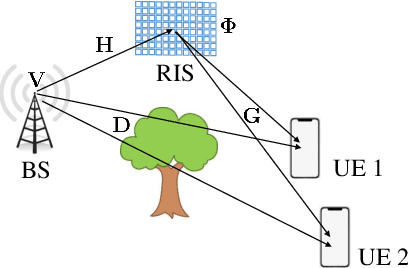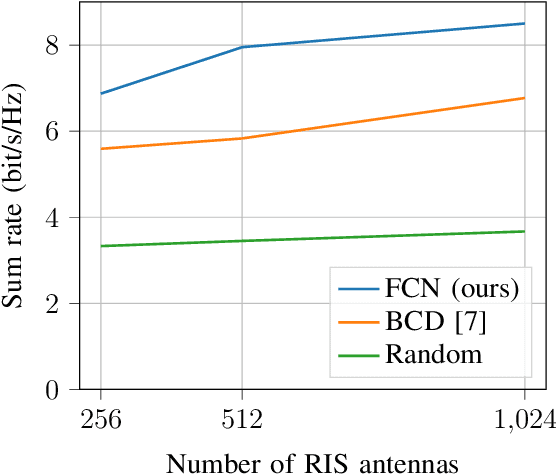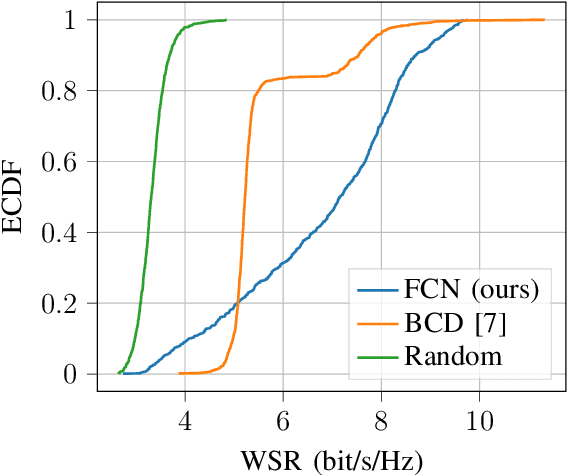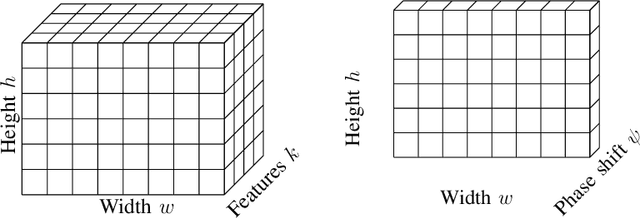Danping He
Terahertz Signal Coverage Enhancement in Hall Scenarios Based on Single-Hop and Dual-Hop Reconfigurable Intelligent Surfaces
Dec 16, 2025Abstract:Terahertz (THz) communication offers ultra-high data rates and has emerged as a promising technology for future wireless networks. However, the inherently high free-space path loss of THz waves significantly limits the coverage range of THz communication systems. Therefore, extending the effective coverage area is a key challenge for the practical deployment of THz networks. Reconfigurable intelligent surfaces (RIS), which can dynamically manipulate electromagnetic wave propagation, provide a solution to enhance THz coverage. To investigate multi-RIS deployment scenarios, this work integrates an antenna array-based RIS model into the ray-tracing simulation platform. Using an indoor hall as a representative case study, the enhancement effects of single-hop and dual-hop RIS configurations on indoor signal coverage are evaluated under various deployment schemes. The developed framework offers valuable insights and design references for optimizing RIS-assisted indoor THz communication and coverage estimation.
5G Channel Models for Railway Use Cases at mmWave Band and the Path Towards Terahertz
Jan 28, 2025



Abstract:High-speed trains are one of the most relevant scenarios for the fifth-generation (5G) mobile communications and the "smart rail mobility" vision, where a high-data-rate wireless connectivity with up to several GHz bandwidths will be required. This is a strong motivation for the exploration of millimeter wave (mmWave) band. In this article, we identify the main challenges and make progress towards realistic 5G mmWave channel models for railway use cases. In order to cope with the challenge of including the railway features in the channel models, we define reference scenarios to help the parameterization of channel models for railway use at mmWave band. Simulations and the subsequent measurements used to validate the model reflect the detailed influence of railway objects and the accuracy of the simulations. Finally, we point out the future directions towards the full version of the smart rail mobility which will be powered by terahertz (THz) communications.
A 3D Modeling Method for Scattering on Rough Surfaces at the Terahertz Band
May 05, 2023



Abstract:The terahertz (THz) band (0.1-10 THz) is widely considered to be a candidate band for the sixth-generation mobile communication technology (6G). However, due to its short wavelength (less than 1 mm), scattering becomes a particularly significant propagation mechanism. In previous studies, we proposed a scattering model to characterize the scattering in THz bands, which can only reconstruct the scattering in the incidence plane. In this paper, a three-dimensional (3D) stochastic model is proposed to characterize the THz scattering on rough surfaces. Then, we reconstruct the scattering on rough surfaces with different shapes and under different incidence angles utilizing the proposed model. Good agreements can be achieved between the proposed model and full-wave simulation results. This stochastic 3D scattering model can be integrated into the standard channel modeling framework to realize more realistic THz channel data for the evaluation of 6G.
A Ray-tracing and Deep Learning Fusion Super-resolution Modeling Method for Wireless Mobile Channel
Jan 27, 2023



Abstract:Mobile channel modeling has always been the core part for design, deployment and optimization of communication system, especially in 5G and beyond era. Deterministic channel modeling could precisely achieve mobile channel description, however with defects of equipment and time consuming. In this paper, we proposed a novel super resolution (SR) model for cluster characteristics prediction. The model is based on deep neural networks with residual connection. A series of simulations at 3.5 GHz are conducted by a three-dimensional ray tracing (RT) simulator in diverse scenarios. Cluster characteristics are extracted and corresponding data sets are constructed to train the model. Experiments demonstrate that the proposed SR approach could achieve better power and cluster location prediction performance than traditional interpolation method and the root mean square error (RMSE) drops by 51% and 78% relatively. Channel impulse response (CIR) is reconstructed based on cluster characteristics, which could match well with the multi-path component (MPC). The proposed method can be used to efficiently and accurately generate big data of mobile channel, which significantly reduces the computation time of RT-only.
Super-resolution of Ray-tracing Channel Simulation via Attention Mechanism based Deep Learning Model
Jan 21, 2023Abstract:As an emerging approach, deep learning plays an increasingly influential role in channel modeling. Traditional ray tracing (RT) methods of channel modeling tend to be inefficient and expensive. In this paper, we present a super-resolution (SR) model for channel characteristics. Residual connection and attention mechanism are applied to this convolutional neural network (CNN) model. Experiments prove that the proposed model can reduce the noise interference generated in the SR process and solve the problem of low efficiency of RT. The mean absolute error of our channel SR model on the PL achieves the effect of 2.82 dB with scale factor 2, the same accuracy as RT took only 52\% of the time in theory. Compared with vision transformer (ViT), the proposed model also demonstrates less running time and computing cost in SR of channel characteristics.
A Multi-Task Learning Model for Super Resolution of Wireless Channel Characteristics
Sep 09, 2022Abstract:Channel modeling has always been the core part in communication system design and development, especially in 5G and 6G era. Traditional approaches like stochastic channel modeling and ray-tracing (RT) based channel modeling depend heavily on measurement data or simulation, which are usually expensive and time consuming. In this paper, we propose a novel super resolution (SR) model for generating channel characteristics data. The model is based on multi-task learning (MTL) convolutional neural networks (CNN) with residual connection. Experiments demonstrate that the proposed SR model could achieve excellent performances in mean absolute error and standard deviation of error. Advantages of the proposed model are demonstrated in comparisons with other state-of-the-art deep learning models. Ablation study also proved the necessity of multi-task learning and techniques in model design. The contribution in this paper could be helpful in channel modeling, network optimization, positioning and other wireless channel characteristics related work by largely reducing workload of simulation or measurement.
Reconfigurable Intelligent Surface Enabled Spatial Multiplexing with Fully Convolutional Network
Jan 08, 2022



Abstract:Reconfigurable intelligent surface (RIS) is an emerging technology for future wireless communication systems. In this work, we consider downlink spatial multiplexing enabled by the RIS for weighted sum-rate (WSR) maximization. In the literature, most solutions use alternating gradient-based optimization, which has moderate performance, high complexity, and limited scalability. We propose to apply a fully convolutional network (FCN) to solve this problem, which was originally designed for semantic segmentation of images. The rectangular shape of the RIS and the spatial correlation of channels with adjacent RIS antennas due to the short distance between them encourage us to apply it for the RIS configuration. We design a set of channel features that includes both cascaded channels via the RIS and the direct channel. In the base station (BS), the differentiable minimum mean squared error (MMSE) precoder is used for pretraining and the weighted minimum mean squared error (WMMSE) precoder is then applied for fine-tuning, which is nondifferentiable, more complex, but achieves a better performance. Evaluation results show that the proposed solution has higher performance and allows for a faster evaluation than the baselines. Hence it scales better to a large number of antennas, advancing the RIS one step closer to practical deployment.
 Add to Chrome
Add to Chrome Add to Firefox
Add to Firefox Add to Edge
Add to Edge